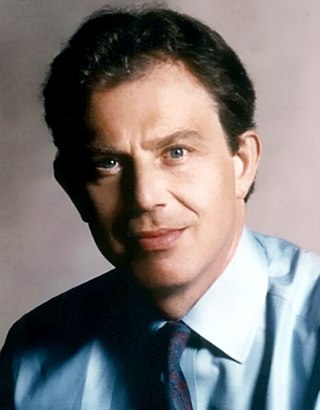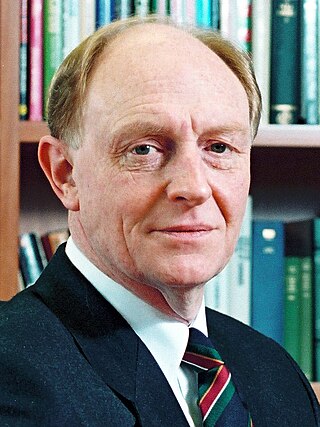Footnotes
- Notes
- References
| Political career |
| |
|---|---|---|
| Shadow Cabinet elections | ||
| Party elections | ||
| General elections | ||
| Family |
| |
| Related topics | ||
| Politics | |
|---|---|
| Shadow Cabinet elections | |
| Party elections | |
| Family | |
| Related topics | |
Elections to the Labour Party's Shadow Cabinet (more formally, its "Parliamentary Committee") were announced on 28 October 1983. [1] In addition to the 15 members elected, the Leader (Neil Kinnock), Deputy Leader (Roy Hattersley), Labour Chief Whip (Michael Cocks), Labour Leader in the House of Lords (Lord Cledwyn of Penrhos), and Chairman of the Parliamentary Labour Party (Jack Dormand) were automatically members.
Denis Healey, who had previously been automatically a shadow cabinet member as Deputy Leader, topped the poll. Robin Cook, Michael Meacher and Giles Radice joined the cabinet; Jones and Meacher had not stood in 1982. [1]
| Rank | Prior rank | Candidate | Constituency | Votes |
|---|---|---|---|---|
| 1 | N/A | Denis Healey | Leeds East | 136 |
| 2 | 1 | Gerald Kaufman | Manchester Gorton | 128 |
| 3 | 3 | Peter Shore | Bethnal Green and Stepney | 113 |
| 4 | 8 | John Smith | Monklands East | 97 |
| 5 | Jack Cunningham | Copeland | 89 | |
| 6 | John Prescott | Kingston upon Hull East | 88 | |
| 7 | 7 | John Silkin | Lewisham Deptford | 86 |
| 8 | 9 | Peter Archer | Warley West | 81 |
| 9 | N/A | Barry Jones | Alyn and Deeside | 80 |
| 10 | 17 | Robin Cook | Livingston | 78 |
| 11 | 13? | Eric Heffer | Liverpool Walton | 74 |
| 12= | 12? | Gwyneth Dunwoody | Crewe and Nantwich | 73 |
| 12= | N/A | Michael Meacher | Oldham West | 73 |
| 12= | Giles Radice | North Durham | 73 | |
| 15 | 10 | Stan Orme | Salford East | 72 |
| 16 | ? | Brynmor John | Pontypridd | 71 |
| 17 | 12 | Bruce Millan | Glasgow Govan | 69 |
| 18 | Jeff Rooker | Birmingham Perry Barr | 66 | |
| 19 | Denzil Davies | Llanelli | 65 |

Michael Hugh Meacher was a British politician who served as a government minister under Harold Wilson, James Callaghan and Tony Blair. A member of the Labour Party, he was Member of Parliament (MP) for Oldham West and Royton, previously Oldham West, from 1970 until his death in 2015.
The Socialist Campaign Group is a UK parliamentary caucus of Labour Members of Parliament in the House of Commons of the United Kingdom. The group also includes some MPs who formerly represented Labour in Parliament, but have had the whip withdrawn or been expelled from the party.
The 1983 Labour Party leadership election was an election in the United Kingdom for the leadership of the Labour Party. It occurred when then leader Michael Foot resigned after winning only 209 seats at the 1983 general election, a loss of 60 seats compared to their performance at the previous election four years earlier. This was the worst showing for Labour since 1935 until 2019.

John Smith was Leader of the Labour Party and Leader of the Official Opposition from 18 July 1992 until his death on 12 May 1994. Smith became leader upon succeeding Neil Kinnock, who had resigned following the 1992 general election—for the fourth successive time, the Conservatives had won and Labour lost.

Tony Blair was Leader of the Labour Party and Leader of the Opposition from his election as Leader on 21 July 1994 until he became Prime Minister on 2 May 1997. Blair became leader upon the death of John Smith. Under Blair, the Labour Party was rebranded as New Labour to distance itself from previous Labour politics and the traditional idea of socialism. Despite opposition from Labour's left-wing, he abolished Clause IV, the party's formal commitment to the nationalisation of the economy, weakened trade union influence in the party, and committed to the free market and the European Union.

Neil Kinnock was Leader of the Labour Party and Leader of the Opposition from 2 October 1983 to 18 July 1992. He convincingly defeated Roy Hattersley, Eric Heffer, and Peter Shore in the 1983 leadership election, which was prompted by Michael Foot's resignation following the disastrous general election result earlier that year. Kinnock's period as Leader encompassed the bulk of the Thatcher premiership and the first two years of the Major premiership. Kinnock resigned in 1992 after losing his second election as Leader.
Elections to the Labour Party's Shadow Cabinet occurred on 14 June 1979, following the Party's fall from power at the May general election that year. In addition to the 12 members elected, the Leader, Deputy Leader, Labour Chief Whip, Labour Leader in the House of Lords, and Chairman of the Parliamentary Labour Party were automatically members.
Elections to the Labour Party's Shadow Cabinet took place on 4 December 1980, having been delayed due to the October election of new Party Leader Michael Foot. In addition to the 12 members elected, the Leader (Foot), Deputy Leader, Labour Chief Whip, Labour Leader in the House of Lords, and Chairman of the Parliamentary Labour Party were automatically members.
Elections to the Labour Party's Shadow Cabinet took place on 19 November 1981. There were 15 posts, rather than 12 as in previous years. In addition to the 15 members elected, the Leader, Deputy Leader, Labour Chief Whip, Labour Leader in the House of Lords, and Chairman of the Parliamentary Labour Party were automatically members.
Elections to the Labour Party's Shadow Cabinet took place on 18 November 1982. In addition to the 15 members elected, the Leader, Deputy Leader, Labour Chief Whip, Labour Leader in the House of Lords, and Chairman of the Parliamentary Labour Party were automatically members.
A deputy leadership election for the Labour Party in the United Kingdom took place on 2 October 1983 to replace incumbent Deputy Leader Denis Healey. Healey had served in the position since 1980, becoming deputy leader at the same time that Michael Foot became party leader. Foot and Healey had both announced their resignations after the general election on 9 June 1983, in which a disastrous performance left the Labour Party with just 209 seats in parliament.
The results of elections to the Labour Party's Shadow Cabinet were announced on 26 October 1984. In addition to the 15 members elected, the Leader, Deputy Leader, Labour Chief Whip, Labour Leader in the House of Lords, and Chairman of the Parliamentary Labour Party were automatically members.
The annual election to the Labour Party's Shadow Cabinet was conducted in 1987. In addition to the 16 members elected, the Leader, Deputy Leader, Labour Chief Whip, Labour Leader in the House of Lords, and Chairman of the Parliamentary Labour Party were automatically members.
Elections to the Labour Party's Shadow Cabinet occurred in November 1952. In addition to the 12 members elected, the Leader, Deputy Leader, Labour Chief Whip, Labour Leader in the House of Lords were automatically members.
Elections to the Labour Party's Shadow Cabinet occurred in 1953. In addition to the 12 members elected, the Leader, Deputy Leader, Labour Chief Whip, Labour Leader in the House of Lords were automatically members. All incumbent members of the Shadow Cabinet retained their seats.
Elections to the Labour Party's Shadow Cabinet occurred in 1955. In addition to the 12 members elected, the Leader, Deputy Leader, Labour Chief Whip, Labour Leader in the House of Lords were automatically members.
Elections to the Labour Party's Shadow Cabinet occurred in November 1989. For these elections the Shadow Cabinet was expanded from 15 to 18 seats and, for the first time, MPs had to cast at least three votes for women.
Elections to the Labour Party's Shadow Cabinet occurred in December 1971. In addition to the 12 members elected, the Leader, Deputy Leader, Labour Chief Whip, Chairman of the Parliamentary Labour Party, Labour Leader in the House of Lords, and Labour Chief Whip in the Lords were automatically members. The Labour Lords elected one further member, Baron Champion.
Elections to the Labour Party's Shadow Cabinet occurred in July 1970, following the party's defeat in the 1970 general election.
Elections to the Labour Party's Shadow Cabinet occurred in November 1963. In addition to the 12 members elected, the Leader, Deputy Leader, Labour Chief Whip, Labour Leader in the House of Lords, and Labour Chief Whip in the House of Lords were automatically members.